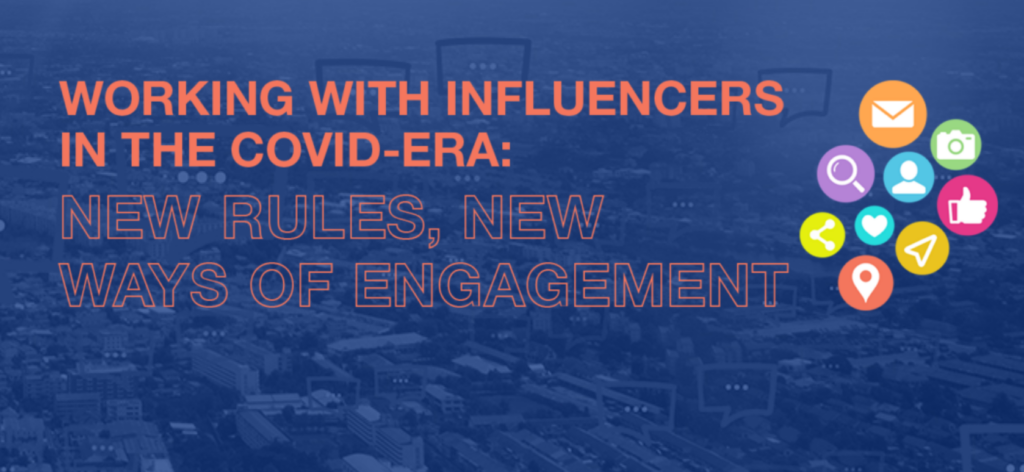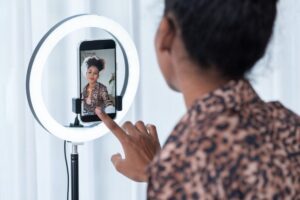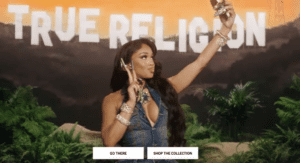 The pandemic has forced many marketers to shift funds to different areas, some of which they may have only dabbled in before. One of those is influencer marketing. According to a Chief Marketer survey fielded just before the pandemic hit, it was ranked as a top three ROI strategy among just nine percent of marketers. After COVID hit, that number jumped to 22 percent. Here’s how three brands—Pernod Ricard, Turner Networks and Ally Financial—have incorporated influencers into their marketing strategies in more significant ways while in-person engagements have been limited.
The pandemic has forced many marketers to shift funds to different areas, some of which they may have only dabbled in before. One of those is influencer marketing. According to a Chief Marketer survey fielded just before the pandemic hit, it was ranked as a top three ROI strategy among just nine percent of marketers. After COVID hit, that number jumped to 22 percent. Here’s how three brands—Pernod Ricard, Turner Networks and Ally Financial—have incorporated influencers into their marketing strategies in more significant ways while in-person engagements have been limited.
Pernod Ricard
COVID forced the marketing team at Pernod Ricard to reevaluate the role influencers played in the marketing mix and reassess the content that was being produced. Further, the role influencers play has increased in importance. “When COVID hit I think we all sort of stopped. How do we handle this? There’s a global pandemic happening. Is it appropriate to have influencers? What we slowly started to see was, as our brand engagements in terms of experiential and in real life started to go down, influencer campaigns started to pick up,” says Kim Haney, Senior Manager of Experiential Marketing at Pernod Ricard.
But the way the brand handles the content has evolved. “You have to look though a different lens when you do it. Where you saw influencer programs supporting experiential or supporting product launches, influencer campaigns became front and center and they became the leads as opposed to the supporting acts,” she says. The vetting process has become more meticulous, Haney attests. “We’re going much deeper and we’re taking a look at when COVID started what were their reactions. At any point did they question the validity of the virus? Did they follow CDC guidelines, from what we could tell, in their posts?” The brand ensures that influencers were mindful, aware and are currently taking a “neutral to conservative approach to the virus and their reaction to it,” she says.
Pernod Ricard is also monitoring how influencers have approached the topic of racial inequality, another important topic during these times. “We look at any triggers for risk. Are we dancing along a political line?” Haney says. The amount of risk mitigation has increased compared to pre-COVID days.
When it comes to content creation, Haney’s team has partnered more closely with the brand’s ecommerce division. “That team has expanded tenfold. You realize there’s this huge opportunity to sell spirits through online platforms.” For instance, with Instagram it has been able to drive awareness and a lifestyle presence, but it also uses the platform’s “swipe up” feature to drive promotion. “We’re leaning on live [virtual] events that our brand ambassadors are doing to connect with our consumers,” she says, and are looking at ways to sub out in-person appearances with virtual ones.
Turner Networks
At Turner Networks, the amount of influencer marketing didn’t necessarily increase. But the entertainment brands have approached it differently and adopted new processes. With large-scale productions shut down, influencers’ independent approach suddenly became more attractive. “Influencers have been able to adapt a little bit better because they’ve always done production in their homes, in a smaller production set-up,” says Dan Cho, VP of Digital and Social Marketing at TBS, TNT and truTV. And since social media usage has increased overall during the pandemic, influencers’ metrics have gone up as well. “It’s about finding influencers who’ve been able to continue what they’ve been doing during quarantine,” he says.
The networks have also incorporated influencers into its virtual event premieres. “Inviting influencers to those type of things has been a big pivot for us. We’ve done a virtual screening or premiere event for every show that’s come along since COVID,” Cho says. Part of that experience includes mailing influencers marketing boxes as a complement to the virtual event. “One, it enhances the premier experience. And two, there are fun things in there for them to engage with and shoot content with. We’ve taken that model and scaled it out,” says Cho.
Ally Financial
When COVID hit, Ally Financial took a hard look at what content was the brand was delivering to consumers. “We didn’t want to put out anything that could be perceived as frivolous or irrelevant,” says Saloni Janveja, Executive Director of Social Media and Marketing Innovation. The key was to be authentic and helpful. “We found that consumers are looking for information that’s more useful right now, that provides utility. In some cases, it could be that they need some levity,” she says. The brand took a close look at its influencers—and all marketing content in general—to make sure that what was being produced was relevant. For instance, since purchasing a home was impossible to do entirely in-person at the start of the pandemic, Ally created social media content about how to buy a house virtually with influencer Cat Alford, which included steps like finding the right real estate agent, virtual tours and exploring the neighborhood safely.
For more on how brands have pivoted their influencer marketing programs during COVID, as well as tips from agency Fullscreen on how to communicate with audiences during times of uncertainty, watch CM’s webinar, Working With Influencers in the COVID-Era.




 Network
Network

